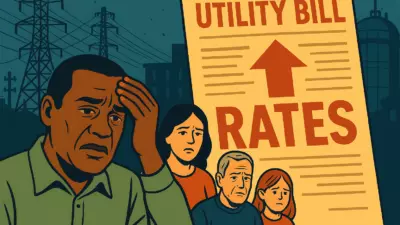Editor’s Note: This article is part of a series looking at the language of Ohio Issue 1 and the reproductive rights it would impact. The full language of the amendment can be found here.

Before Issue 1 was fully realized as a ballot initiative, Ohio Republicans met at last year’s March for Life, talking about the new landscape Roe v. Wade’s downfall would bring following the U.S. Supreme Court’s Dobbs v. Jackson Women’s Health Organization decision.
“This is how we move forward in a pro-life manner and abolish abortion in our state,” state Rep. Jena Powell, R-Arcanum, said at the time.
But a ban already exists amid the ashes of Roe v. Wade and the battle over Issue 1, the proposed reproductive rights amendment this Nov. 7 that would protect access to abortion care, contraception, miscarriage care, fertility treatment, and continuing one’s pregnancy.
A law signed by Gov. Mike DeWine in 2019 knocked the law that kept abortions legal in Ohio up to 22 weeks back to six weeks after a pregnant person’s last menstrual period. That ban, which is currently on hold due to litigation, includes no exceptions for rape or incest. It was in effect in Ohio for 82 days before being halted temporarily by the courts. The Ohio Attorney General’s office has asked the Republican-controlled Ohio Supreme Court to lift the injunction on the six-week ban, with a decision currently still pending.
The law is called the “Heartbeat Bill” by supporters, based on the idea that detection of a fetal heartbeat happens at that time in pregnancy.
“If Issue 1 does not pass, abortion would still be legal in Ohio until a baby’s heartbeat can be detected,” the Catholic Conference of Ohio wrote in an FAQ encouraging a “no” vote on the ballot initiative.
Fetal heartbeat is not agreed upon by medical professionals.
“It is clinically inaccurate to use the word ‘heartbeat’ to describe the sound that can be heard on ultrasound in very early pregnancy,” according to the American College of Obstetricians and Gynecologists, referring to bills across the nation that would ban abortion based on fetal heartbeat. “In fact, there are no chambers of the heart developed at the early stage in pregnancy that these bills are used to target, so there is no recognizable ‘heartbeat.’”
Cardiac activity in a fetus is “a gradual process,” ACOG stated, adding that it is “not accurate to characterize the embryo or fetus’s cardiac development as a heartbeat” until the chambers of the heart have been developed.
But the six-week ban in Ohio is still a law, and enforcement has been stopped only temporarily.
Six-week ban
Opposition groups sued soon after the six-week ban was signed into law in 2019, and the court battle left the law unenforceable until 2022. With the overturning of Roe v. Wade, Ohio Attorney General Dave Yost filed a request with a federal court to release the six-week ban from its indefinite hold.
In late June of that year, a federal judge dissolved the injunction, leaving the state and it’s nine women’s health clinics like Planned Parenthood scrambling to figure out what was next.
A 10-year-old rape victim had to be taken to Indiana to terminate her pregnancy, and Yost was among state leaders who questioned the 10-year-old’s story.
Doctors spent months wondering whether or not their medical care would be subject to legal problems, and how to define words like “medical emergency” in the six-week ban.
In July 2022, the Ohio Supreme Court rejected health clinics’ request for an emergency stay of the six-week abortion ban.
Religious leaders and leaders from Cincinnati, Columbus, Dayton, Toledo and Cleveland Heights all submitted court briefs against the abortion ban, arguing violations from the law ranged from religious freedom to Home Rule authority.
In Sept. 2022, abortions rights groups and clinics sent the ban back to court, or rather, two different courts. First they went to the Ohio Supreme Court, but when the court didn’t act quickly, groups represented by the ACLU of Ohio chose to move the lawsuit to the Hamilton County Court of Common Pleas “to pursue an alternative path that could lead to quicker relief,” attorney Jessie Hill said at the time.
After two different temporary holds, a Hamilton County judge indefinitely paused the six-week ban as the state waits on a final decision.
Now, the case has returned to the Ohio Supreme Court, as the state has asked the high court to release the injunction once again.
Though the court heard oral arguments on the case in September, it could be months before they come back with a decision, taking the decision past the Nov. 7 general election, where Issue 1 would decide the constitutional fate of reproductive health.
The amendment
The proposed constitutional amendment Ohioans will vote on as Issue 1 would give the “right to make and carry out one’s own reproductive decisions,” including abortion, contraception, fertility treatments and miscarriage care, according to the language of the amendment.
The state can’t “burden, penalize, prohibit, interfere with or discriminate against” the pregnant person or anyone who assists “unless the state demonstrates that it is using the least restrictive means to advance the individual’s health in accordance with widely accepted and evidence-based standards of care.”
Abortion isn’t universally legal, however, even under the constitutional amendment.
Abortion “may be prohibited after fetal viability,” according to the amendment, which is defined as “the point in a pregnancy when, in the professional judgment of the pregnant patient’s treating physician, the fetus has a significant likelihood of survival outside the uterus with reasonable measures.”
In a legal analysis from Yost, the state attorney general said the amendment “would give greater protection to abortion to be free from regulation than at any time in Ohio’s history.”
He argued that inclusion of “reproductive decisions” such as contraception make the amendment go “beyond” the protections of Roe v. Wade, with “broader” language than previous abortion protections.
“Some of those might not affect Ohio law as a practical matter, as Ohio has no restrictions on miscarriage care or on continuing a pregnancy,” Yost wrote. “But the ‘not limited to’ clause leaves open an unknown future in court litigation.”
Tracy Thomas, director of the Center for Constitutional Law at the University of Akron, read the language as a direct return to Roe v. Wade protections.
“It’s just trying to clarify what reproductive autonomy is,” Thomas told the Capital Journal.
When it comes to legal and constitutional issues dealing with the field of medicine, courts often look at evidence and rely on the expertise of doctors, which is how Thomas says Roe v. Wade worked, and how Issue 1 would work as well.
“The compelling interest to regulate should be about patient care,” Thomas said. “That’s what we have seen when you go back 50 years.”
Read the other stories in this series:
Ohio Issue 1: Attacks on parental rights do not appear in amendment
Access to expensive fertility treatment in Ohio varies but the Issue 1 amendment seeks to protect it
Ohio Issue 1’s reproductive rights amendment and protection of access to contraception
Susan Tebben is an award-winning journalist with a decade of experience covering Ohio news, including courts and crime, Appalachian social issues, government, education, diversity and culture.
The Ohio Capital Journal is an independent, nonprofit news organization dedicated to connecting Ohioans to their state government and its impact on their lives. The Capital Journal combines Ohio state government coverage with incisive investigative journalism, reporting on the consequences of policy, political insight and principled commentary.







